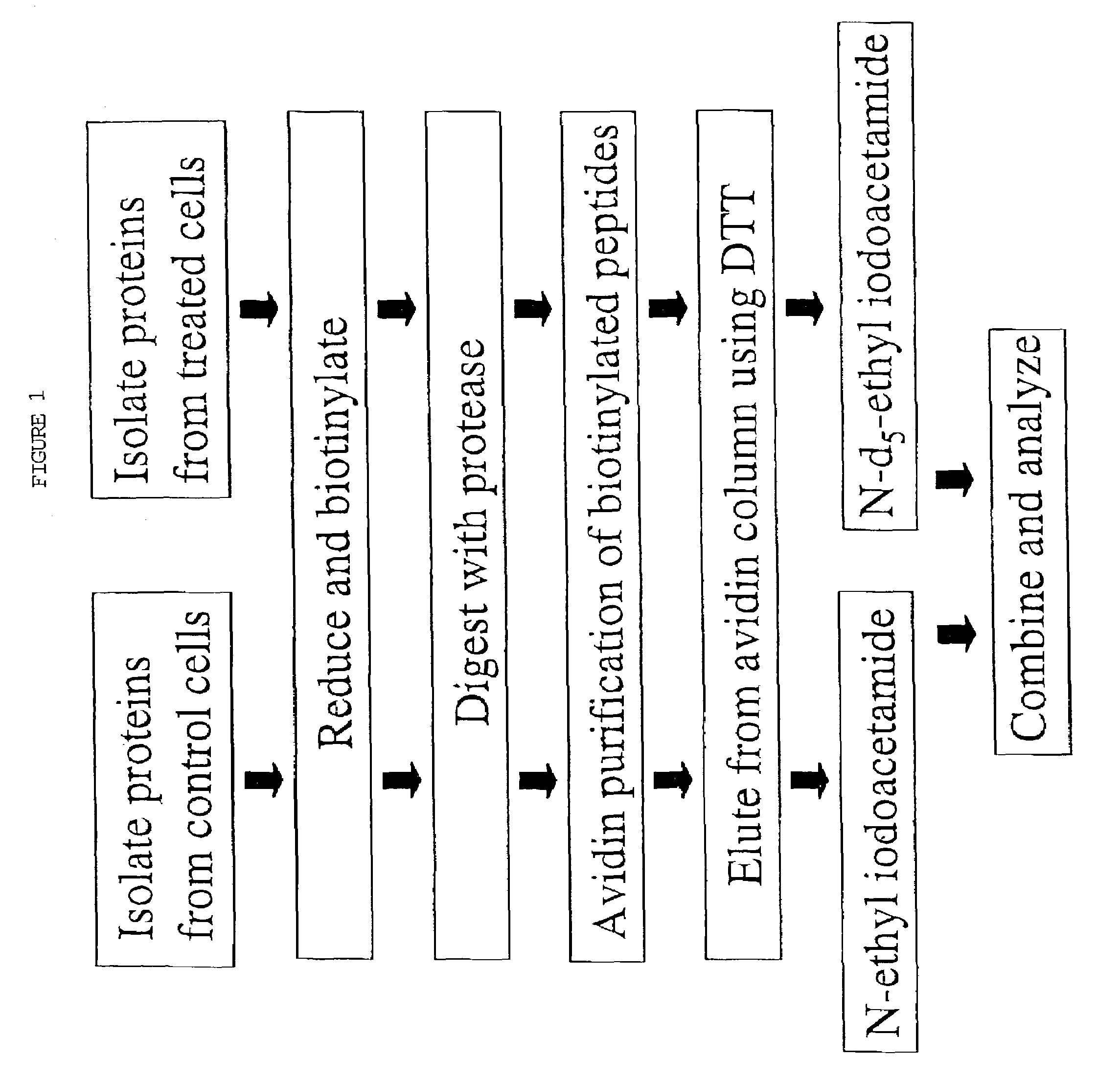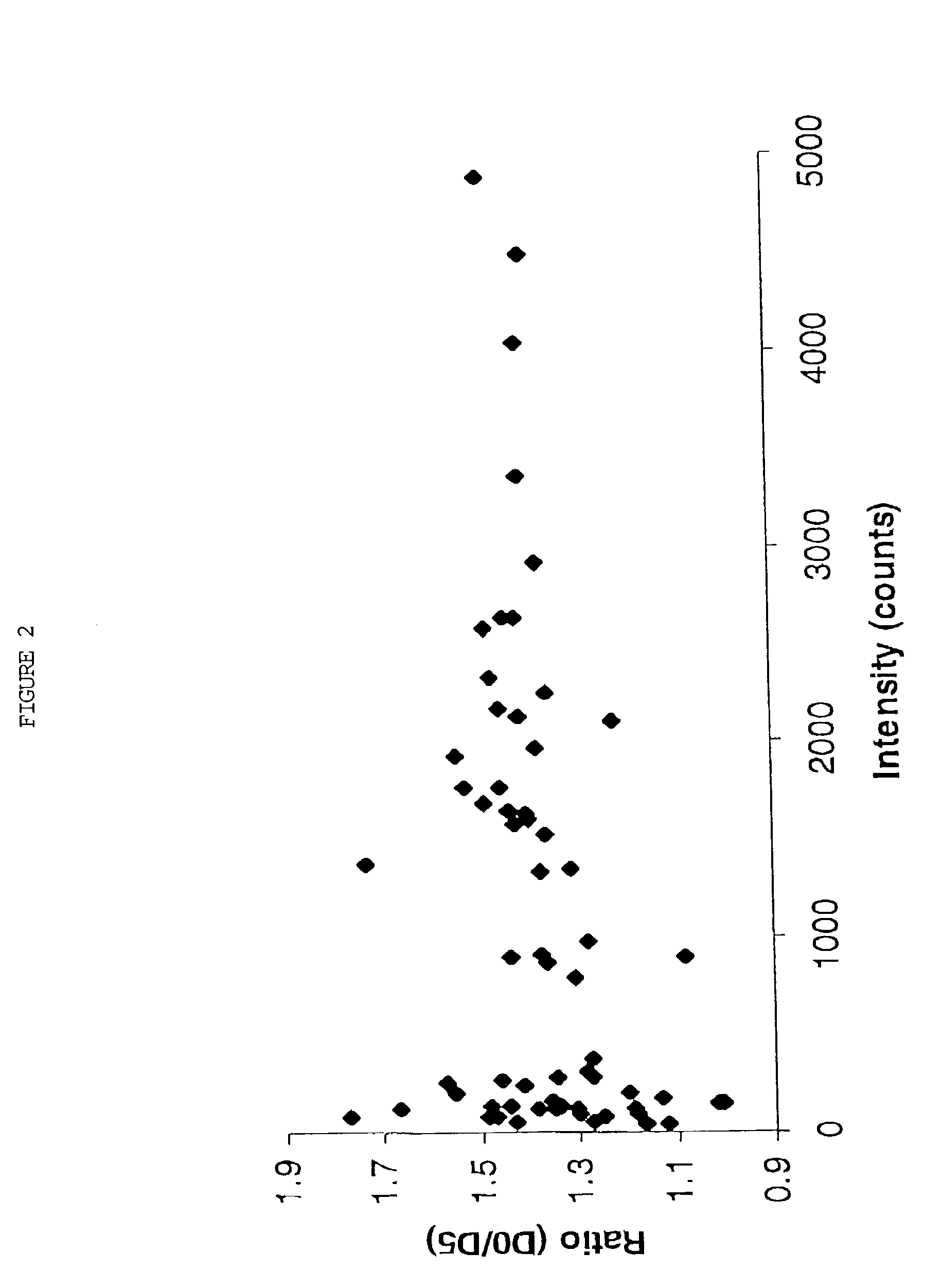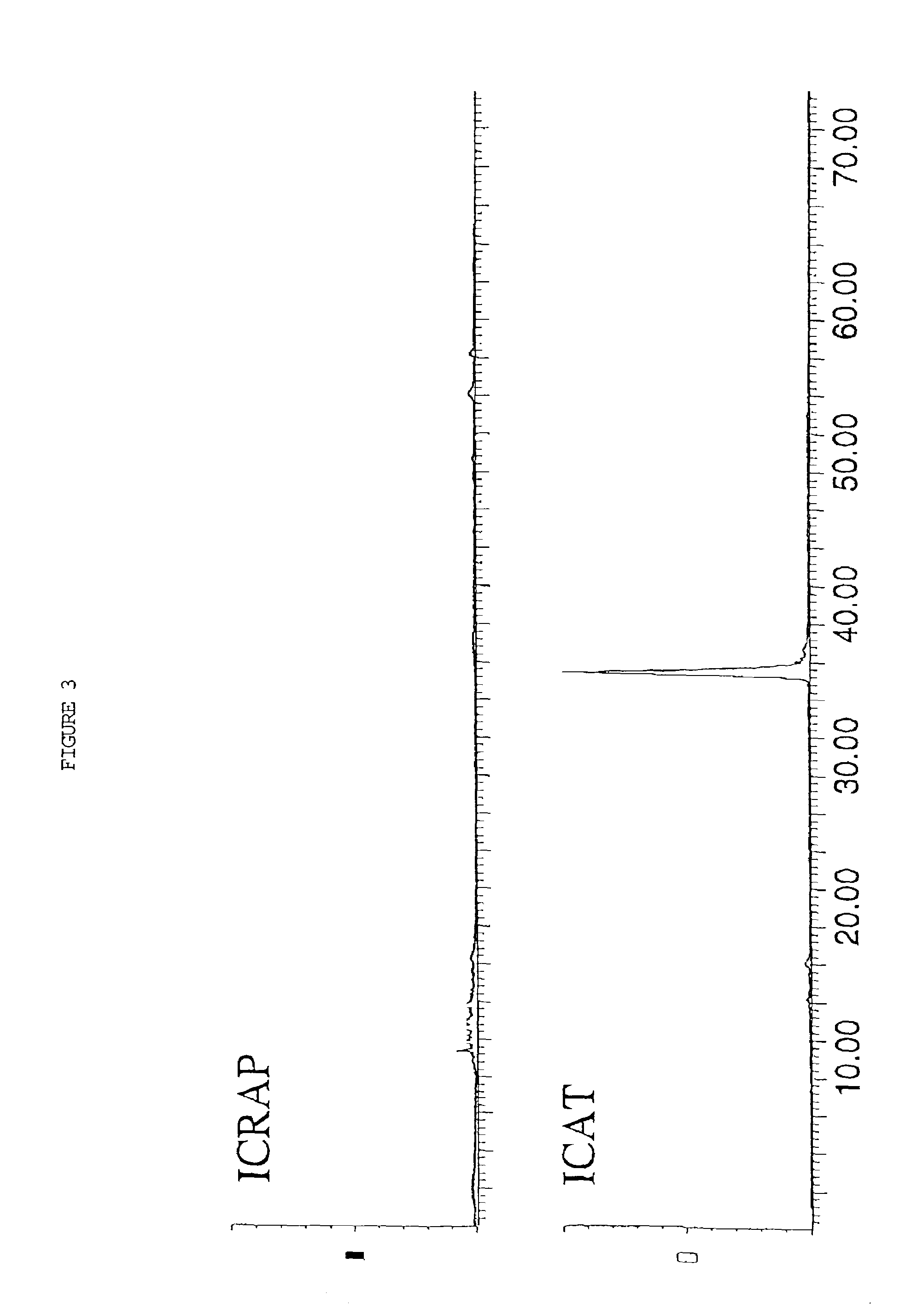Polypeptide analyses using stable isotope labeling
a stable isotope and polypeptide technology, applied in the field of proteomics, can solve the problems of difficult detection of low abundance proteins, difficult to detect low abundance proteins, and difficult to use methods with high throughput 2d-page systems
- Summary
- Abstract
- Description
- Claims
- Application Information
AI Technical Summary
Benefits of technology
Problems solved by technology
Method used
Image
Examples
example 1
Synthesis of Representative Isotope Coded Alkylating Reagents: N-(Ethyl-d5) Iodoacetamide and N-Ethyl Iodoacetamide
[0069]N-(Ethyl-d5) Iodoacetamide. Ethyl-d5-amine hydrochloride (0.85 g, 9.81 mmol) was suspended in a solution of iodoacetic anhydride (3.47 g, 9.81 mmol) in dichloromethane (40 mL) and cooled to 0° C. A solution of 3.6 mL, 20.6 mmol) of N,N-diisopropylethylamine in dichloromethane (10 mL) was added dropwise over 20 minutes. The reaction was stirred at 0° C. for 30 minutes then allowed to stir to room temperature for 4 hours. The solvent was evaporated to give a yellow syrup. The syrup was dissolved in ethyl acetate (100 mL) and washed with 1N hydrochloric acid (2×50 mL), then saturated sodium bicarbonate solution (2×50 mL), then saturated sodium chloride solution (50 mL). After drying over anhydrous magnesium sulfate, the organic solution was filtered and evaporated to give a light yellow solid. Purification by flash chromatography on silica gel (50 g) using 1:1 ethyl ...
example 2
Reversible Biotinylation of a Representative Protein Mixture
[0071]Preparation of a representative protein mixture. Protein standards were purchased from Sigma Chemical Co. (St. Louis, Mo.). Two protein mixtures were made containing hen ovalbumin (430 and 215 ug / ml), bovine beta-lactoglobulin (80 and 20 ug / ml), rabbit glyceraldehyde-3-phosphate dehydrogenase (49 and 98 ug / ml), rabbit phosphorylase b (97 and 323 ug / ml), and bovine alpha-lactalbumin (120 and 120 ug / ml).
[0072]Protein Reduction. Pelleted protein sample (25–200 ug) is solubilized in 100 ul of 8 M urea (stored over AG 501-X8 mixed bed resin to remove cyanate), 0.1 M TRIS pH 8.2, 1 mM EDTA, and heated at 100° C. for 5 minutes. The sample is cooled to room temperature and reduced using a final concentration of 5 mM tris(2-carboxyethyl)phosphine (TCEP) (Pierce Chemical Co., Rockford, Ill.). Nitrogen is blown over the sample and incubated for 10 minutes at 37° C. The excess reducing agent is removed using a chloroform / methanol...
example 3
Representative Isotope Coded Affinity Tag (ICAT) Method
[0076]ICAT reagents were supplied by Applied Biosystems Inc. (Framingham, Mass.). Dried protein (50 ug, as described above) was solubilized in 100 ul 50 mM TRIS pH 8.5 plus 0.1% SDS, and boiled for five minutes. The denatured proteins were reduced by the addition of 1 ul 1 M TCEP for 10 minutes at 37° C. Reducing agent was removed by overnight acetone precipitation at −20° C. The pellet was suspended in 100 ul TRIS / SDS (see above) and treated with 100 ug of either do or d8 ICAT reagent for 90 minutes at room temperature in the dark. The reaction was quenched by the addition of 1 ul mercaptoethanol for 30 minutes at room temperature, and separate do and d8 reactions were mixed together following the quench. Excess ICAT reagent was removed by acetone precipitation and the pelleted protein was suspended in 50 mm ammonium bicarbonate, and digested with 2 ug trypsin overnight at 37° C. with constant vortexing. The sample was boiled f...
PUM
| Property | Measurement | Unit |
|---|---|---|
| temperature | aaaaa | aaaaa |
| pH | aaaaa | aaaaa |
| pH | aaaaa | aaaaa |
Abstract
Description
Claims
Application Information
 Login to View More
Login to View More - R&D
- Intellectual Property
- Life Sciences
- Materials
- Tech Scout
- Unparalleled Data Quality
- Higher Quality Content
- 60% Fewer Hallucinations
Browse by: Latest US Patents, China's latest patents, Technical Efficacy Thesaurus, Application Domain, Technology Topic, Popular Technical Reports.
© 2025 PatSnap. All rights reserved.Legal|Privacy policy|Modern Slavery Act Transparency Statement|Sitemap|About US| Contact US: help@patsnap.com



